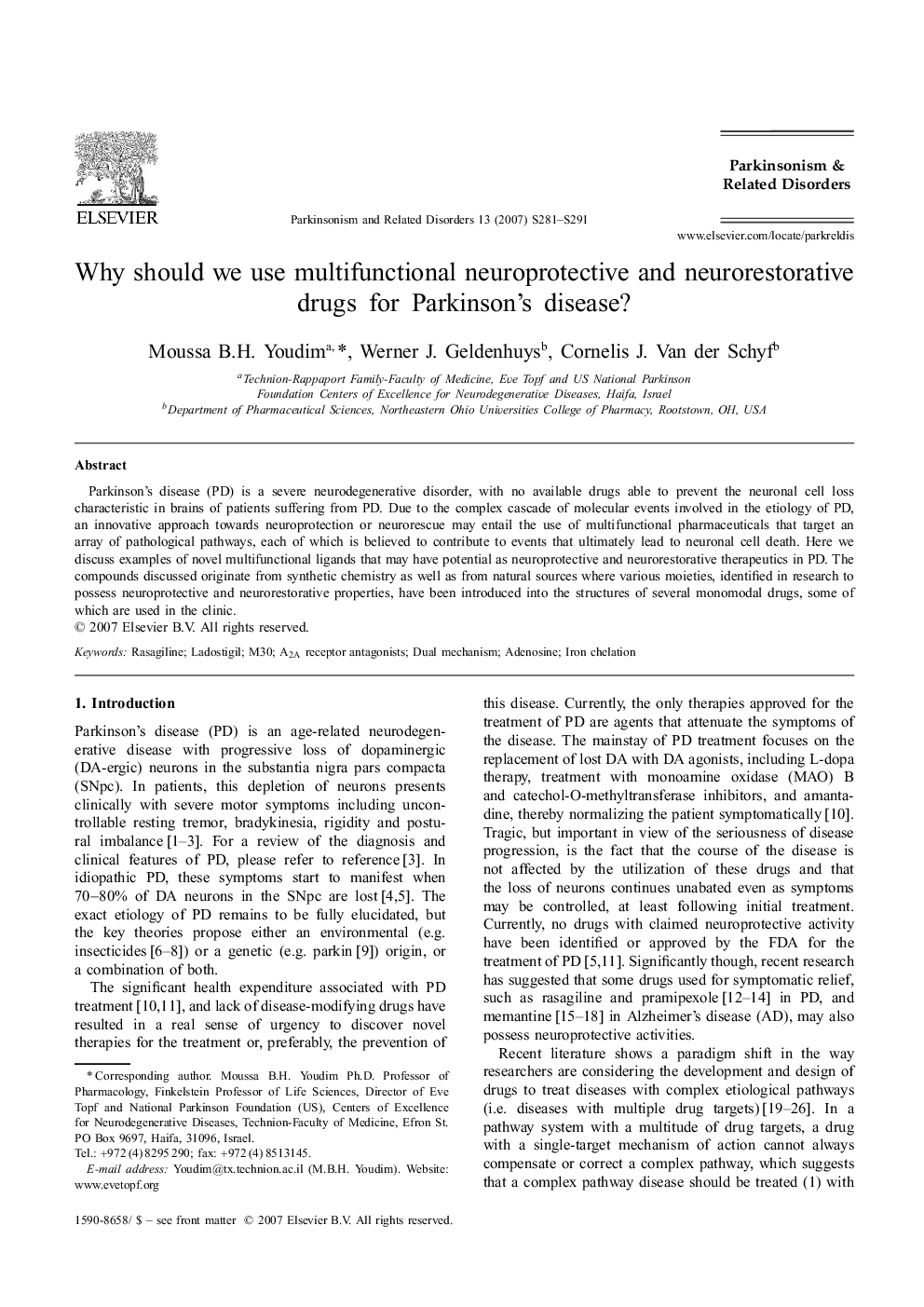| Article ID | Journal | Published Year | Pages | File Type |
|---|---|---|---|---|
| 1922591 | Parkinsonism & Related Disorders | 2007 | 11 Pages |
Parkinson's disease (PD) is a severe neurodegenerative disorder, with no available drugs able to prevent the neuronal cell loss characteristic in brains of patients suffering from PD. Due to the complex cascade of molecular events involved in the etiology of PD, an innovative approach towards neuroprotection or neurorescue may entail the use of multifunctional pharmaceuticals that target an array of pathological pathways, each of which is believed to contribute to events that ultimately lead to neuronal cell death. Here we discuss examples of novel multifunctional ligands that may have potential as neuroprotective and neurorestorative therapeutics in PD. The compounds discussed originate from synthetic chemistry as well as from natural sources where various moieties, identified in research to possess neuroprotective and neurorestorative properties, have been introduced into the structures of several monomodal drugs, some of which are used in the clinic.
